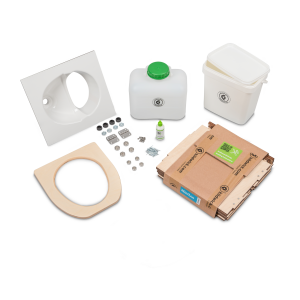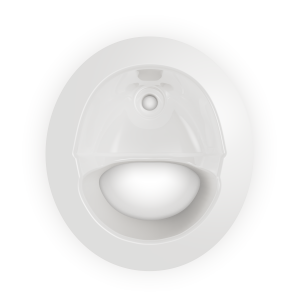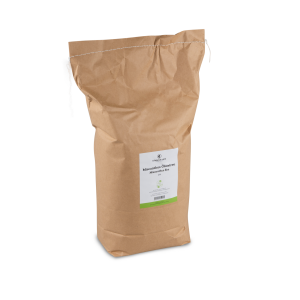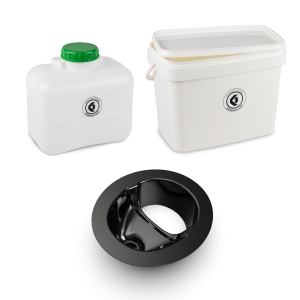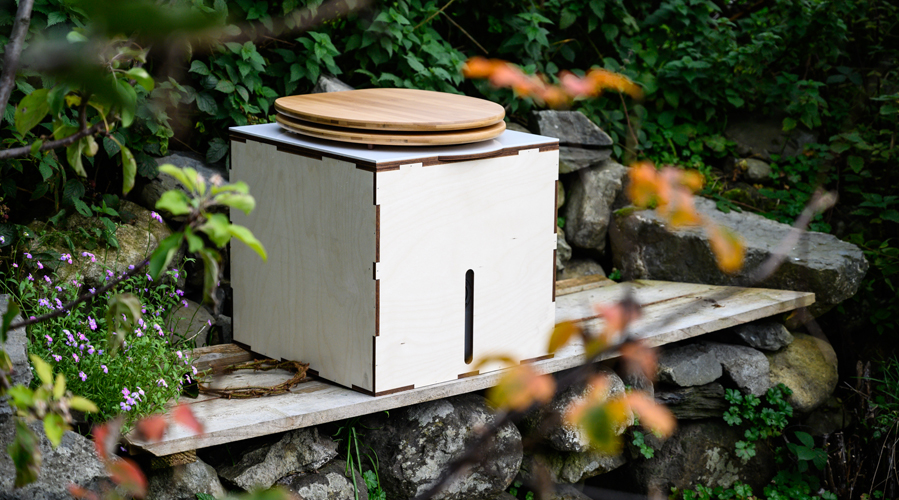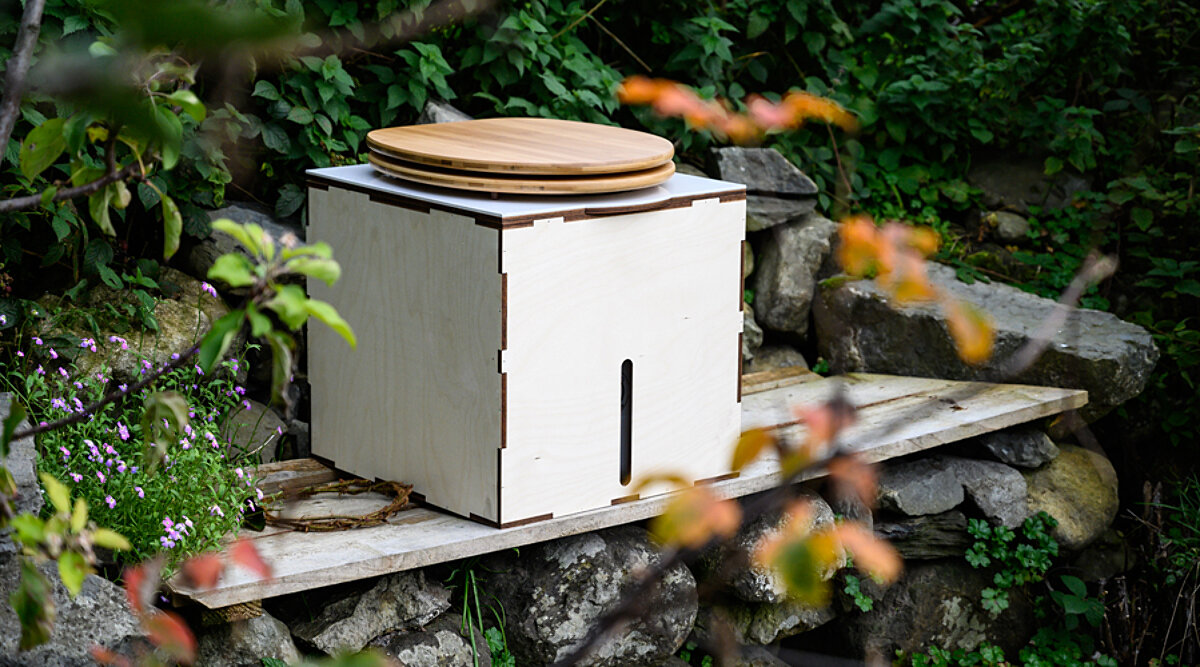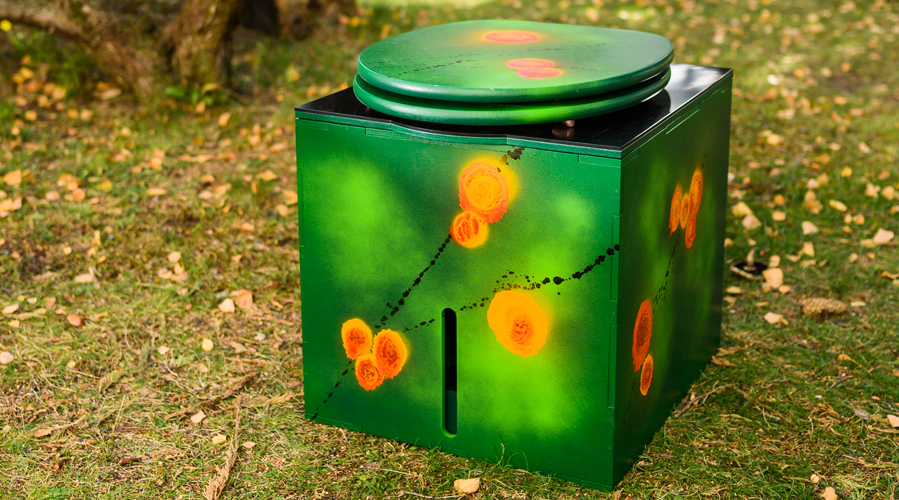Urine-diverting dry toilets – and why you need one!
The two questions we’re asked most often are “What is a urine-diverting dry toilet?” and “How does it work?”. These are excellent questions which we’d like to answer in detail.
In a nutshell, UDDTs are innovative, sustainable alternatives to regular lavatories. They don’t require chemicals or even water and so make users more independent.
How does a UDDT work?
The principle of a UDDT is simplicity itself! Breaking down the term ‘urine-diverting dry toilet’ into its component parts tells us a lot:
- ‘Urine-diverting’ means solids are separated from liquids
- ‘Dry’ means UDDTs work without any water
- ‘Toilet’ – that’s pretty self-explanatory! :-)
In a UDDT, human urine and excrement are collected separately thanks to the use of a special diverter (also known as a diversion pan or separator).
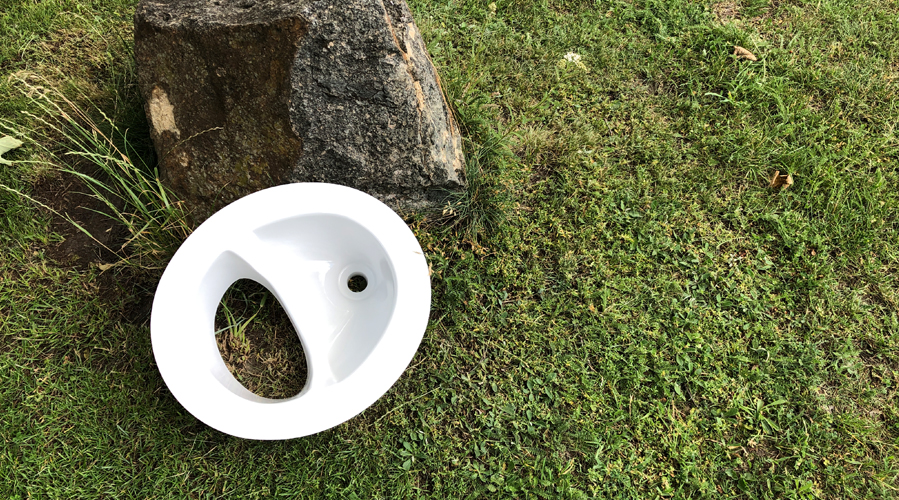
To those used to conventional WCs or chemical toilets in which both urine and faeces are collected and discharged together with water and possibly chemical additives, the diverter may look a little strange at first sight. It’s divided into two sections. Urine drains away in the basin-shaped front section. It’s divided by a ridge from the rear section, which contains a large opening for excrement (solids). The urine flows into a canister located either directly beneath the hole or externally, while the solids fall into a bucket.
The big advantage of keeping things separate is that hardly any odour is produced – unlike in a simple composting toilet, where liquid and solid matter are collected together in the same container. Many people still remember earth closets and outhouses and haven’t forgotten the smell! Fortunately, this nasal nuisance is eliminated by UDDTs.
The following diagram shows the usual structure of a UDDT.
The three main components are:
- The diverter
- The urine canister
- The solids container
To make your UDDT as comfortable and convenient as a conventional water toilet, you also need a super-structure and a toilet seat of some description.
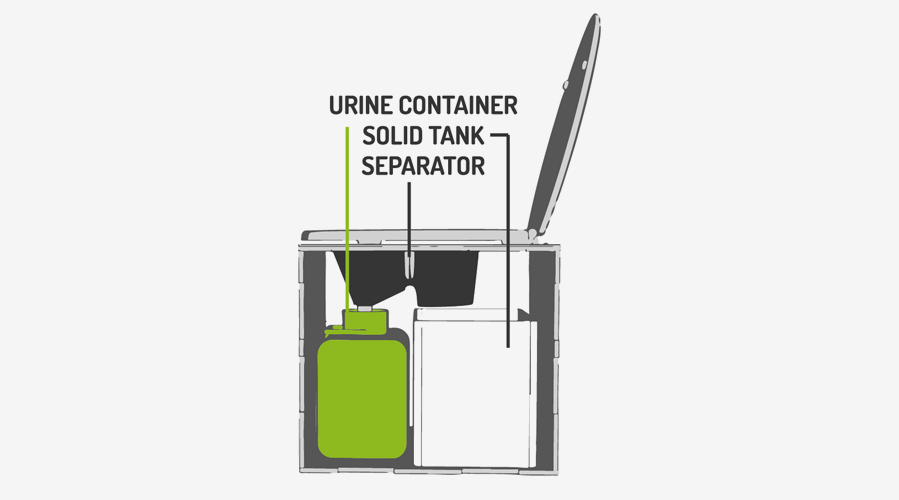
Please don’t pee into a UDDT standing up!
Due to the design of the diverter, it only works properly when you sit down.
Is a waterless toilet really possible?
Yes, it is! Whatever type of dry or composting toilet you use, they don’t require flushing!
The diverter keeps things separate, so the urine passes through a basin-shaped drain into the canister provided. Note that there’s no need to flush with water. Thanks to gravity, solids fall into a container lined with a bag containing dry cover material. Once again, no flush water is needed.
The huge advantage of diverting toilets is that you save loads of precious drinking water every time you use the toilet. For your camper van or houseboat, this also means that no faecal or chemically contaminated blackwater arises, treating which would require a great deal of energy. By having a UDDT, you can save water and money – and also do the environment a big favour!
A toilet with no chemicals!
More and more people are replacing their chemical toilets used on their allotment or when camping with diverting toilets. Since keeping urine and faeces separate prevents the build-up of unpleasant odours, no chemical additives are needed to treat your ‘output’.
In conventional camping toilets, chemicals are added a) to suppress nasty smells, b) as disinfectant, c) to break down excrement and toilet paper, and d) to make emptying the holding tank easier.
But most owners of chemical loos are still faced with the problem of what to do with this faecal-chemical mix. After all, they must only be emptied at proper disposal points. Many campers and caravanners use the facilities on hand when staying at campsites, but suppose you’ve got a chemical toilet on your allotment?
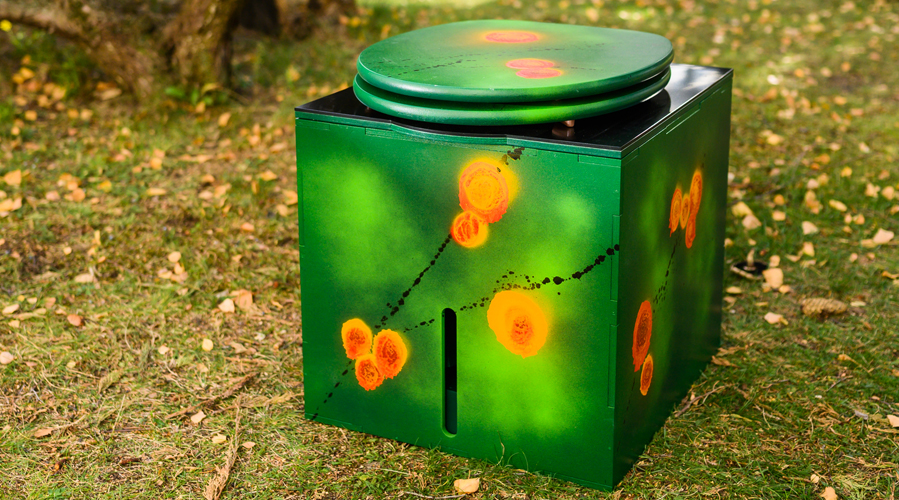
Is it true that UDDTs don’t smell?
Yes, it’s true – they really don’t smell! This is because that horrible toilet odour only develops when liquid and solid waste are mixed. But when urine leaves the body, it’s usually sterile, i.e. free of bacteria and odour, and therefore doesn’t smell.*
Faeces are also odourless when dried. And they dry very quickly by means of separation and adding cover material. Therefore, since UDDTs are brilliant at separating urine from excrement, a UDDT is a toilet that’s completely free of nasty smells, water and chemicals.
* Note that the small of urine may be altered by certain foods or alcohol.
How do I dispose of excreta from a UDDT?
The disposal problems associated with, say, chemical toilets are eliminated by having a UDDT. You’ll be surprised how easy it is to maintain a urine-diverting dry toilet. In fact, there are just two substances to be taken care of:
- Urine
- Faeces with cover material (and toilet paper)
Since they’re both completely natural, disposal is very simple! The urine can be poured out of the canister down any toilet – at a petrol station or motorway services, or even at home. Alternatively, it can be diluted and then used in your garden as liquid fertilizer.*
Your solids container should be lined with a bag to hygienically collect the excrement and the cover material. Once the bag isn’t quite full and you want to empty it, seal it tightly and throw it away with your normal household rubbish (which in Germany means the grey bin). Mind you, the mixture of faeces and ecological cover material is also excellent for composting.*
